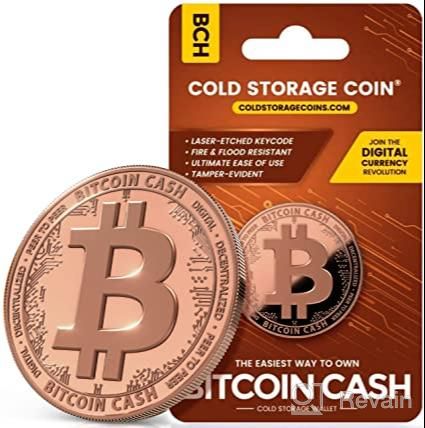Review on Bitcoin Cash by Azad Aliyev

This is my review and it's about Bitcoin Cash
Every of us has heard about Bitcoin. But what about Bitcoin Cash? It is also a crypto project but with more and interesting features.
Bitcoin Cash (BCH) is a cryptocurrency. It shares many of the same features as Bitcoin (BTC), but it also integrates many changes and features that are different from it. It is considered a "fork" of Bitcoin, although supporters believe that Bitcoin Cash is closer to the original vision of creating a peer-to-peer electronic cash system, which was written in a white paper by the founder, individual or individual of the protocol in 2008 put forward. group. The pseudonym is Satoshi Nakamoto.
Bitcoin Cash is a decentralized peer-to-peer electronic cash system that does not rely on any central agency, such as a government or financial institution. Therefore, it represents a fundamental redesign of the nature of currency. The main features of Bitcoin Cash are:
is open to everyone. Nobody controls or owns Bitcoin Cash. Without a CEO, you don't need to apply for a license to use it.
A pseudonym. The identity has nothing to do with the transaction. This helps ensure that anyone can use Bitcoin Cash for free without censorship.
is transparent. All transactions are recorded on a global public ledger called the blockchain. The ledger is periodically updated in connected blocks to form a chain. This makes it easy for anyone to view the complete property history and helps eliminate the possibility of fraud.
distributed. Public ledgers (blockchains) are voluntarily stored by a network of participants called "nodes." This helps ensure the longevity of the information.
is rule-based. The nodes follow a set of rules (protocols) to reach a consensus on the state of the ledger. This consensus constitutes the "truth" about who owns what. However, the protocol can evolve with the needs of the participants, although a high degree of consensus is required to make changes. This makes Bitcoin Cash a quasi-political system in which the participants form a social contract.
is immutable. The technology implemented means that once registered on the blockchain, transactions cannot be effectively changed.
Security. Through a process called Proof of Work (PoW), "miners" compete to add new blocks to the chain that makes up the ledger (again, the blockchain). Based on principles driven by game theory, the hardware and power costs associated with PoW mining contribute to network security, so the cost of attacking the network is prohibitively high and ensures that attackers cannot directly benefit.
Fixed supply. Only 21 million coins will be created. This makes Bitcoin Cash a hard asset, just like land or gold, giving people the opportunity to store value in the digital field for a long time.
Low interest rates. Bitcoin Cash can conduct reliable, fast, and affordable transactions of any value and location (including cross-border transactions). This makes it an effective alternative to payment networks like Visa and Mastercard.
What is the use of Bitcoin Cash? The above-mentioned main features of
Bitcoin Cash make it a long-term store of value and efficient medium of exchange. Philosophically, these two use cases, combined with the decentralization and openness of the protocol, make Bitcoin Cash (the network) a way to support and enhance global economic freedom.
Long-term preservation
The total supply of Bitcoin Cash will never exceed 21 million. This is written in the code that defines the Bitcoin Cash protocol. As a decentralized network, Bitcoin Cash users ultimately decide how the protocol plays out, and since it is not in the interest of participants to dilute their holdings by changing the protocol, the limit of 21 million coins will almost certainly remain the same for forever.
The rate at which new coins are added to the circulating supply is gradually reduced according to the established program also incorporated in the code. The emission rate is cut in half approximately every four years. This makes Bitcoin Cash a "deflationary" asset.
In April 2020, the third “halving” reduced the issuance rate from 12.5 BCH per block to 6.25 BCH. At that time, 18.375 million of the 21 million coins had been distributed (87.5% of the total). The fourth halving, that is, in 2024, will reduce the issuance to 3.125 BCH, and so on, until about 2136, the last halving will reduce the block reward to only 0.00000168 BCH.
The Bitcoin Cash “fixed stone” supply plan makes it unique among hard assets. In contrast, although the supply of gold is limited, it is affected by the relationship between supply and demand. As the price of gold rises, more gold miners are encouraged to look for gold. This leads to an increase in the supply of gold, which puts downward pressure on prices.
Efficient medium of exchange
Bitcoin Cash makes point-to-point payments between individuals into cash, but in the digital realm. Crucially, the cost of sending Bitcoin Cash is usually less than a cent per transaction, and settlement occurs almost immediately regardless of the physical location of the participants. This allows Bitcoin Cash to be used not only for remittances and cross-border commerce, but also for day-to-day transactions such as shopping for groceries. Because the fees and transaction times are so low, Bitcoin Cash is also effective for micro-transaction use cases, such as rewarding content creators and rewarding app users.
Bitcoin Cash has implemented an exponential moving target difficulty adjustment algorithm called aserti32d. Every two days behind a block, the difficulty is halved, and every two days before a block, the difficulty is doubled. This difficulty setting algorithm helps to ensure that new blocks are generated at a stable rate (every 10 minutes), even under large price fluctuations and computing power flexibility. For example, if a SHA256 miner transfers its hashing power from BTC to BCH and vice versa, the Bitcoin Cash difficulty adjustment algorithm can ensure that blocks continue to be produced at the desired constant rate.

- it is as popular as bitcoin
- it is related to bitcoin so it is reliable
- nothing bad













